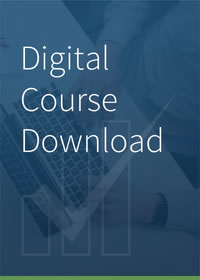Additional information
| Credits | 9 |
|---|---|
| Format | On Demand |
| Field of Study Department | Information Technology |
| CPE Approved | Yes |

| Credits | 9 |
|---|---|
| Format | On Demand |
| Field of Study Department | Information Technology |
| CPE Approved | Yes |
1. Recognize common cybersecurity misconceptions
2. Identify the five functions of the NIST Cybersecurity Framework
3. Recognize the five stages of the ITIL Framework
4. Identify the main causes for the rise of cyberattacks
5. Recognize common types of cyberattacks
6. Identify different kinds of cyber threat actors
7. Identify ways to protect yourself against cybercrime
This course was very helpful and I have already found myself using what I learned to prepare, sort, and filter tables in Excel.
Excel: Audit & Analytical Uses for Filters & Tables (AUMC)
Excel: Audit & Analytical Uses for Filters & Tables (AUMC)
Need more than one course? Get this course PLUS 12-month unlimited access to every other course we offer with an Unlimited CPE Subscription for only $149!